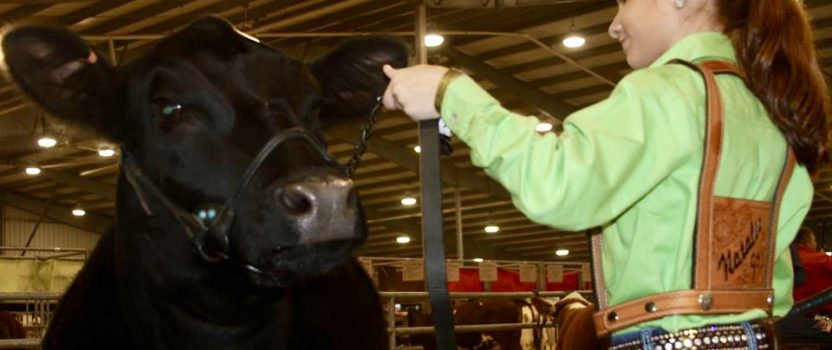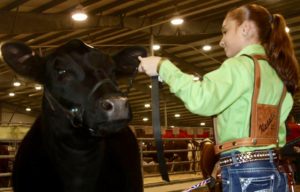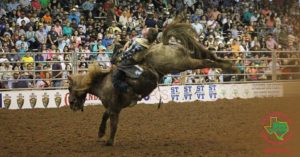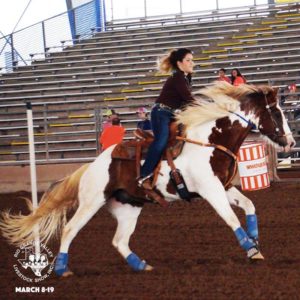RGVLS- 80 Years in the Making!
Before there was the Rio Grande Valley Livestock Show and the beginnings of the community that’s so closely tied to it, there were the vaqueros, “the original cowboys,’’ as a local historian describes them, who created the culture and way of life that would come to define Mercedes.
The Livestock Show is celebrating a milestone in 2019. It’s the 80th edition of the yearly March celebration that started in 1939 as a project of the Mercedes Chamber of Commerce. There will be the horse shows, rodeos, the competition among area FFA students to have the best steers, goats and sheep, not to mention the carnivals and concerts.
What has led up to the 80th Livestock Show is a story of not only the yearly celebration but of Mercedes itself. The city was founded in 1907 as the headquarters of the American Rio Grande Land & Irrigation Company. The land company’s initial recruiting efforts focused on convincing Midwesterners brought down by railroad that Mercedes and the surrounding region were ideal for farming and commercial agriculture.
Livestock shows and expositions were an ideal way to showcase the agricultural potential of the region and highlight the existing culture and traditions of what local historian Dr. Beatrice de Leon Edwards calls “the original cowboys,’’ who worked the ranches of the Spanish and Mexican land grant recipients.
“In the early days especially, some `farmers,’ (Midwest settlers), had no idea what to do to even get started,’’ said Edwards, a Mercedes native and retired school administrator who currently teaches at the University of Texas-Rio Grande Valley. “The agricultural expositions and livestock shows allowed the best techniques and agricultural/livestock products to be displayed and demonstrated, which would help local farmers and ranchers improve their production and be successful.’’
The first agricultural and livestock shows in Mercedes took place in 1913. The initial shows and expositions were heavily advertised in northern and Midwestern states, Edward said, a recruiting tool to attract more investors, land developers, and farming and ranching interests to start new enterprises in Mercedes and the surrounding area.
“Having a rodeo with national contenders, inviting movie stars and other celebrities, and the yearly parade were excellent marketing tools to provide exposure and renown to the town and its local businesses,’’ Edwards said.
Those early years laid the groundwork for the Livestock Show that local and area residents know today – and have enjoyed for decades. A look through years of photos of the Livestock show features beauty queens, kids in parades, and some of the biggest stars of old western movies and popular TV cowboy shows like Michael Landon of “Bonanza,’’ a golden era of 1960s American television brought home to Mercedes and the Valley.
“Ask anyone who has grown up in Mercedes and the Rio Grande Valley, and they will name the Rio Grande Valley Livestock Show & Rodeo as one of the best-known and attended events of the year,’’ Edwards said.
The 2019 edition features a full slate of activities, rodeos and horse shows, live music many nights of the 11-day event, and perhaps most notably, a robust schedule of competitions and judging of cattle, goats, hogs and sheep, as raised and cared for by area youths competing for prizes and “best-in-show’’ awards. These competitions often feature FFA and 4-H clubs from area high schools and have long been a mainstay of the Livestock Show.
“The methods and techniques taught at the high schools and agricultural colleges are scientifically developed and proven and are far more sophisticated than those used in the earliest days of agricultural and livestock production in the Rio Grande Valley,’’ Edwards said.
Mercedes and the Livestock Show go together and the enduring partnership is as important as ever to the city.
“The Rio Grande Valley Livestock Show has become the premier rodeo and livestock show event south of San Antonio,’’ said Sergio Zavala, the city manager of Mercedes. “For the city of Mercedes, it has a great economic impact to our community, and we always look forward to meeting the challenge of participating in whatever way we can to magnify its impact.’’
From the original cowboys of over 100 years ago to today’s FFA clubs, the Livestock Show and its enduring legacy show no signs of abating.
“The roots run deep, and will not disappear anytime soon,’’ Edwards said. “Just look around, and you will see children and adults with their cowboy hats, their boots, and their western wear in celebration of their local farming and ranching heritage.’’





